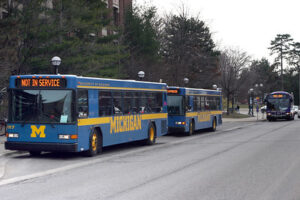Recently, I have written about the long-term danger of training people for low-wage work. That danger will not materialize until these workers reach retirement age and have little in the way of savings. Four out of ten Baby Boomers have no retirement savings. Twenty-five percent of Gen X’ers are in the same boat.
The cumulative effect of insufficient retirement savings will cost taxpayers $1.3T over the next 20 years, according to a new study released by the Pew Charitable Trusts. One key to having sufficient retirement savings is time; the more time a worker must save for retirement, the better the opportunity is for investment gains. However, the Pew Charitable Trust report estimates that an additional $140 beyond what a worker already saves monthly could erase the retirement savings gap altogether – if the individual can maintain that saving rate over 30 years.
To accomplish this, the worker would have to gross about $200 more per month. Using the most recent hourly wage data from the Bureau of Labor Statistics, a worker earning the average hourly wage ($33.20) would need to work an additional six hours per month to net the additional $140 for their retirement fund. Among the lowest-paid workers in the BLS data, individuals would need to work an additional 9.5 hours to earn enough to save an additional $140 per month. Someone who works for minimum wage in Michigan would need to work an additional 20 hours per month to net $140. A worker who earns the federal minimum wage (currently $7.25) would need to work an additional 27.5 hours per month to net $140.
Eliminate training programs for low-wage work
Simply, the less a worker earns, the more hours that worker will need to add to make up their personal retirement savings gap. It is not a trivial problem for low-wage workers. And that problem snowballs over time.
For so many reasons, it is bad public policy for our community colleges to train workers for low-wage jobs. First, it looks bad. What does it say when a publicly funded institution works (hard) to entice people into low-wage occupations?
Second, it does not help the student who pays for a viable education; in fact, it actively harms them by failing to deliver what they paid for. Worse, low-wage work functions as a tax on the worker. To get ahead – even marginally – the low-wage worker needs to work dozens of additional hours, which may not even be possible without taking on a second job.
Third, it actively minimizes the taxpayers’ return-on-investment in community colleges. It creates a situation where the taxpayer and the community college are working at cross-purposes. It negligently – and in some cases deliberately – wastes taxpayers’ resources.
And while minimizing worker pay may offer an immediate marginal benefit to the employer, it also shifts an enormous financial burden to future taxpayers. Today, that burden has a $1.3T price tag. That will continue to rise over time.
While the Pew report offers a different solution to closing the retirement savings gap, community colleges have an obligation to maximize the taxpayers’ return-on-investment. (Which would also go a long way toward eliminating the retirement savings gap.)
We elect Trustees to oversee our investment in our local community colleges. A 27% graduation rate and press releases about $12-an-hour jobs make you wonder exactly what they are doing for us.
Photo Credit: elycefeliz , via Flickr





















